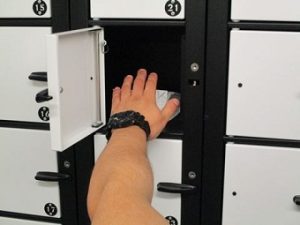
A new white paper, investigating how security technology can support inmates, staff and rehabilitation programmes to reassign responsibility and reshape the prison landscape, has been launched by Traka, an experienced firm in this field.
The white paper, created in partnership with Serco and Unilink, is entitled, “How technology can support 21st century prison systems.’ It highlights the evolving role of UK prisons, and responsibilities on inmates and staff to choose rehabilitation methods and consider their own health and well being.
Traka highlights the impacts of security technology and premises to prioritise this mindset, in line with Govenrment Justice Committee intentions for prison safety and decency together with influences on design and function of future facilities.
Tom Smith, Traka UK Sales Manager comments: “From our own involvement with working with high profile prison estates and rehabilitation facilities, the use of security technology in prisons can have multiple benefits for inmates and staff alike”.
“In this white paper, we have drawn on our experience in partnership to aid inmates in taking tentative steps to taking responsibility for their own rehabilitation, with positive response, especially when it comes to well-being and mental health. This has a subsequent effect on staff working on site, including less stress pressure and improved communications,” he continued.
Included in the white paper are real examples of transforming prison estates, including the establishment of HMP Berwyn as the first publicly-run super-prison and Dovegate, itself a success representation of the Transforming Prison Estates Programme.
Key to success has been cited as the implementation of Medication Distribution Lockers, enabling inmates to manage and collect medication in their own timeframes, quickly and efficiently so as not to impact on their essential daily activities.
Tom concluded: “The installation of Medication Distribution Lockers is just one example of how security technology can improve well-being and support prisons, not only in the ideals of rehabilitation but also in planning for the future.”
“In this white paper, we highlight the impact it has already made. The positives can also extend to the cost, time and resource savings made which can be refocussed towards better serving inmates and enabling the Government’s proposals for rehabilitation. We welcome feedback on what is essentially a fast evolving sector that needs the commitment of our industry to succeed.”











